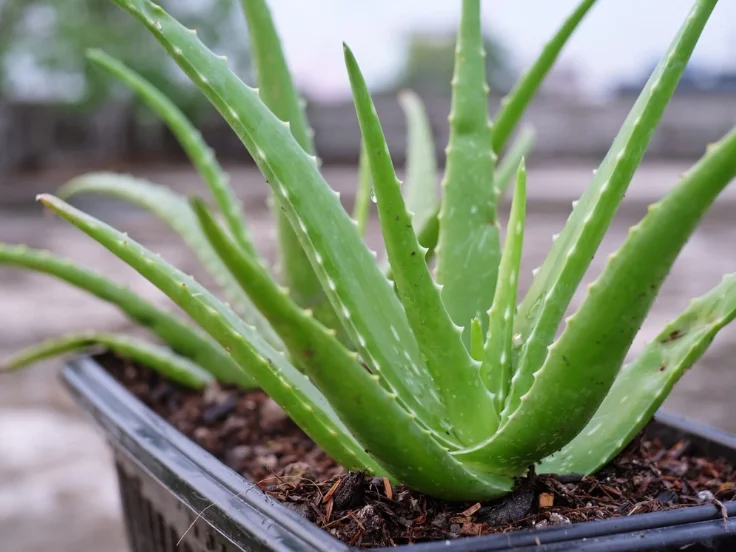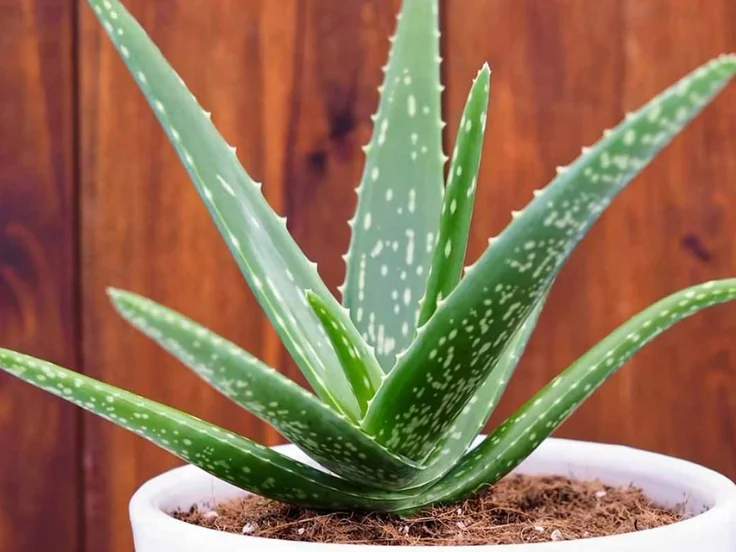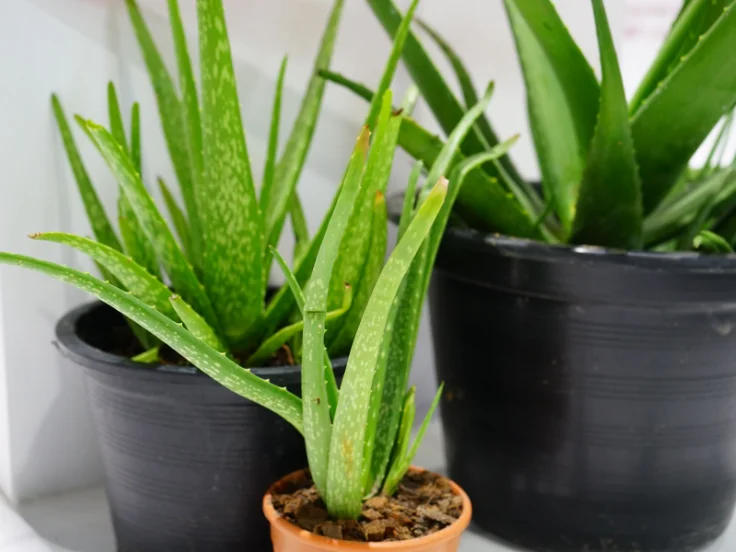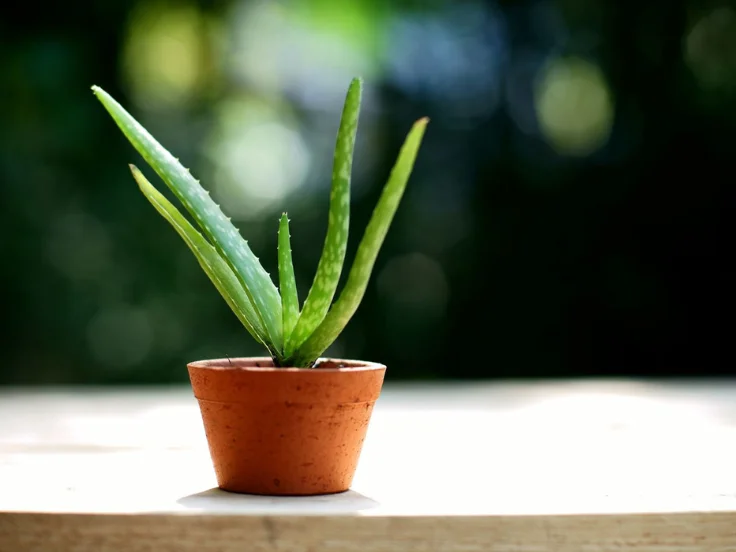Aloe vera is more than just a decorative succulent; it is a versatile plant with numerous health benefits. Whether you are a beginner or an experienced gardener, aloe vera plant care is essential for maintaining its health and ensuring it thrives indoors or outdoors. In this guide, we will cover everything from proper watering, sunlight, and soil requirements to repotting tips, pest control, and propagation.
Transition words will guide you through each step, ensuring your aloe vera stays lush, vibrant, and full of life.
Aloe vera’s natural ability to store water in its leaves makes it resilient, but even a drought-resistant plant needs proper care. Understanding its unique requirements will help you enjoy its beauty and benefits for years.
Aloe Vera Plant Care Guide

Aloe vera belongs to the succulent family and is native to the Arabian Peninsula. Its thick, fleshy leaves store water, making it drought-resistant and easy to maintain. Aloe vera is highly valued for its gel, which is used for skin care, hair care, and minor wound treatment.
However, despite being low-maintenance, proper care is crucial. Without the right conditions, your aloe vera may develop brown spots, root rot, or stunted growth. Additionally, the plant produces offsets, also known as pups, which can be propagated to grow new aloe vera plants.
Aloe Vera Soil and Pot Care

For optimal aloe vera plant care, soil choice is fundamental. Aloe vera requires well-draining soil to prevent waterlogging, which can cause root rot. A mixture of cactus soil or a combination of potting soil, sand, and perlite works best. If you’re interested in exploring care techniques for other indoor plants, such as air plants, check out our detailed guide on how to care for air plants indoors, which offers tips on watering, lighting, and maintenance.
-
Choose the Right Pot: Select a pot with drainage holes. Clay pots are ideal because they allow excess moisture to evaporate and prevent water from sitting at the roots.
-
Soil Replacement: Repotting your aloe vera every 2-3 years ensures fresh nutrients and healthy root growth.
Additionally, you can improve drainage by placing small stones at the bottom of the pot. This simple step helps prevent water accumulation and supports the plant’s long-term health.
Aloe Vera Watering Care

Watering is perhaps the most crucial aspect of aloe vera plant care. Aloe vera is drought-tolerant, and overwatering is a common mistake that can lead to root rot.
-
Watering Frequency: Water your plant every 3-4 weeks in the growing season. Reduce watering during winter, when the plant is dormant.
-
Check Soil Moisture: Allow the soil to dry completely before watering again. A moisture meter can help monitor this.
-
Watering Technique: Water directly at the base, avoiding leaves to prevent fungal growth and rotting.
Moreover, avoid using cold water directly from the tap; lukewarm or filtered water is ideal. Transitioning gradually from less frequent watering to normal intervals ensures your aloe vera absorbs water efficiently without stress.
Sunlight Requirements
Sunlight is another critical factor in aloe vera plant care. Aloe vera thrives in bright, indirect sunlight.
-
Indoor Plants: Place near a south or west-facing window. If leaves start turning brown or reddish, reduce direct sunlight.
-
Outdoor Plants: Aloe vera can tolerate direct sunlight but gradually acclimate it to prevent sunburn.
Consistent light exposure encourages healthy growth, strong leaves, and optimal gel production. Rotating your plant periodically ensures all sides receive sunlight, promoting balanced growth.
Fertilization and Nutrition
While aloe vera is hardy and can survive without much fertilizer, feeding it occasionally boosts growth and health.
-
Fertilizer Type: Use a balanced, water-soluble fertilizer diluted to half strength.
-
Frequency: Fertilize once in spring and summer, avoiding the winter dormancy period.
-
Additional Tips: Organic compost or aloe-specific fertilizers can enhance leaf vitality and overall plant health.
Proper fertilization, combined with good sunlight and watering habits, helps aloe vera develop thick, lush leaves and vibrant growth. Transitioning from soil and watering to nutrition ensures your plant receives comprehensive care.
Pruning and Maintenance
Regular maintenance is essential in aloe vera plant care. Remove damaged or dried leaves to encourage new growth and maintain a neat appearance.
-
Pruning Technique: Cut leaves at the base using a sterilized knife.
-
Cleaning Leaves: Wipe leaves with a damp cloth to remove dust, which can block sunlight and affect photosynthesis.
Routine maintenance not only keeps your aloe vera aesthetically pleasing but also reduces the risk of pests and diseases.
Propagation of Aloe Vera
Propagating aloe vera is simple and rewarding. The plant produces offsets (pups) that can grow into independent plants.
-
Steps to Propagate:
-
Remove the pup from the mother plant.
-
Let it dry for 1-2 days to form a callus.
-
Plant it in well-draining soil.
-
Propagation allows you to multiply your aloe vera collection and share it with friends. Additionally, growing new plants ensures that your existing aloe vera is not overcrowded, which improves its overall health.
Common Pests and Diseases
Despite being resilient, aloe vera can face pest issues and diseases. Common problems include:
-
Aphids and Mealybugs: Treat with neem oil or insecticidal soap.
-
Root Rot: Caused by overwatering; repotting in fresh soil can save the plant.
-
Leaf Discoloration: Often a result of excessive sunlight or poor watering habits.
-
Fungal Infections: Can be prevented by proper watering and air circulation.
Monitoring your plant regularly and addressing problems early ensures robust growth and longevity.
Additional Tips for Thriving Aloe Vera
-
Temperature: Aloe vera thrives in temperatures between 55°F and 80°F. Avoid frost, as it can damage the plant.
-
Air Circulation: Ensure proper airflow around your plant to prevent fungal growth.
-
Harvesting Gel: Only cut mature leaves, and always leave some intact to continue nourishing the plant.
These extra tips contribute to holistic aloe vera plant care and maximize the plant’s benefits.
FAQs About Aloe Vera Plant Care
Q1: How often should I water my aloe vera?
A: Water every 3-4 weeks, ensuring the soil is completely dry before the next watering.
Q2: Can aloe vera grow in low light?
A: Aloe vera prefers bright, indirect light but can survive in low light with slower growth.
Q3: Is aloe vera toxic to pets?
A: Yes, aloe vera can be toxic to cats and dogs, so keep it out of reach.
Q4: How do I know if my aloe vera needs repotting?
A: Signs include roots growing out of drainage holes or the plant becoming top-heavy.
Q5: Can I use tap water for aloe vera?
A: It’s better to use filtered or rainwater to prevent mineral buildup in the soil.
Q6: How do I prevent my aloe vera from getting brown tips?
A: Brown tips often result from over-fertilization, low humidity, or sunburn. Adjust care accordingly.
Conclusion
Proper aloe vera plant care involves attention to watering, sunlight, soil, nutrition, and maintenance. Firstly, consistent care helps your aloe vera thrive, offering beauty and health benefits. Moreover, adjusting watering and sunlight prevents issues like root rot or sunburn. Additionally, regular pruning and monitoring promote strong growth. Meanwhile, using quality soil and proper pots enhances overall plant health. For a detailed step-by-step guide on caring for your aloe, check out how to care for a medicinal aloe plant. Consequently, your aloe vera remains vibrant and resilient.
Furthermore, observing seasonal changes helps you adapt care effectively. Therefore, observe your plant and adapt care to its environment. Finally, by following these tips, your aloe vera will flourish, becoming a long-lasting, beneficial addition to your home. For example, check resources like The Spruce for expert advice.


















